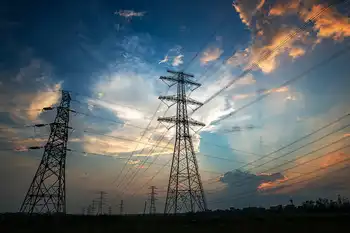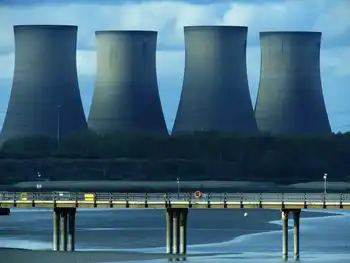Timminco may be for real
By Globe and Mail
CSA Z463 Electrical Maintenance -
Our customized live online or in‑person group training can be delivered to your staff at your location.

- Live Online
- 6 hours Instructor-led
- Group Training Available
That CEO, one Dr. Heinz Schimmelbusch, began the company's annual meeting by apologizing that it had to be moved to 4 p.m. from 1 p.m. Why the switch? Ah, he explained, there's so much interest in the company now that they had to find a bigger venue, so they moved it to the Royal York Hotel's grand Imperial Room, which, back in the day, was a swank nightclub that hosted Tony Bennett. What better place for the Good Doctor to croon about Timminco's shiny prospects?
The story, if you haven't been following lately, is one of a minor economic miracle on the banks of the St. Lawrence. Timminco, a company worth less than $25-million at the end of 2006, says it has discovered a better, cheaper way of taking the impurities out of metallurgical silicon and using it for solar panels.
Silicon is a key element in converting the sun's energy to electricity. High-quality silicon (at least 99.999 per cent pure) is needed to make solar panels; it's also in hot demand because European countries are subsidizing new solar energy projects, and becauseÂ… well, perhaps you've seen the price of oil. For suppliers of polysilicon, the cost of producing a kilogram of solar-quality stuff is typically about $35 a kilogram. Timminco says it can do so for about $10 to $15 a kilogram, once the bugs are worked out.
Since the metallurgy department at The Globe and Mail was closed down years ago, we can't speak to the feasibility of Timminco's claims. But by the company's own admission, it's not exactly a high-tech process: it involves cooking lower-grade silicon with oxygen in a giant furnace to take out the unwanted stuff. They've applied for patents, but those are probably years away, if they are granted at all.
Anyway, enough about the technical side of things. What we're here to examine is the investment logic, especially now that Timminco has a $3.2-billion market value, after the stock went up 100-fold in 16 months. This is based not on the financial results, which are still barren, but a flurry of announcements, customer contracts, media hype, and so on. A consultant, paid by the company, made a one-day visit to the site and suggested Timminco's solar expansion project – for which the budget is less than $100-million – could earn between $270-million and $1-billion in operating profit in 2010. Really! If true, that might be the best return on a dollar in the history of capitalism. Astonishing.
All of which raises a few questions about Mr. Schimmelbusch's performance in Toronto this week. During the press conference, as he talked of Timminco's future, he looked to be having as much fun as if someone were pulling out his toenails – until a reporter asked about short sellers. Then his face lit up. This was a subject he could get animated about. He implied he was suing them. In which court? He wouldn't say.
Later, at the annual meeting, he repeated that claim: “There are a few short sellers here, running up and down the streets here, making idiotic, bizarre… statements on the company.… The matter is, by the way, before courts. If somebody oversteps a certain line, if he's over the line, it's straight going to the courts.”
Well, okay. No CEO likes short sellers. But Timminco is not a bank or an insurance firm, where nasty rumours must be fought because they can ruin a business faster than you can say “Bear Stearns.” It's just a factory, cooking silicon. If Mr. Schimmelbusch is confident the critics are dead wrong, why make threats? Just let the results speak and let the shorts eat losses.
So, let's return to the investment math. Work backwards: To justify a $3.2-billion value, how much would Timminco actually have to make? A good guess would be at least $400-million in EBITDA (that's earnings before interest, taxes, depreciation and amortization).
Timminco says it's selling solar silicon for at least $60 a kilogram. Prices are expected to fall, but assume they can get that much and also get their cost down to $20 a kilo (even though larger, better-capitalized competitors have never been able to). That leaves $40 in margin. So to get to $400-million in EBITDA means producing 10 million kilograms.
To date, Timminco has delivered 124,000 kilograms.
Now, we're not saying it's impossible for them to increase their silicon production 80-fold in the next couple of years, and to do it consistently, at a fraction of the cost of anyone else, and to derive these sorts of profits from a capital investment of less than $100-million. We're just saying that investing is all about probabilities, and you've got to ask, what is the probability of all that occurring?
Retail shareholders in Timminco quickly point to the presence of Eric Sprott, who's an investing genius and whose firm owns 17 per cent. Yes, true. We're tempted to point out that he bought the vast majority of his shares at $7 or less, and there's no evidence he bought much at $20, never mind at $30, the current price.
But we really don't want to say that too loudly. We'd rather not provoke the litigious Mr. Schimmelbusch.











